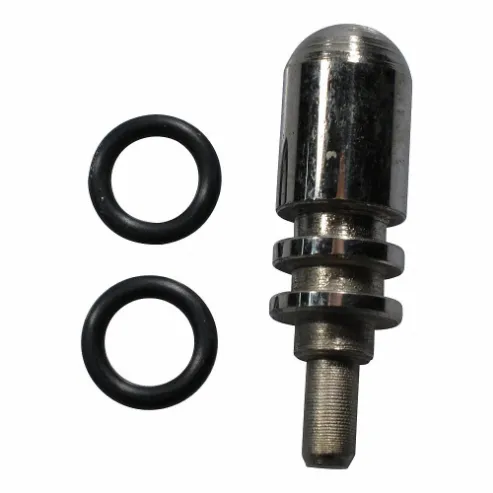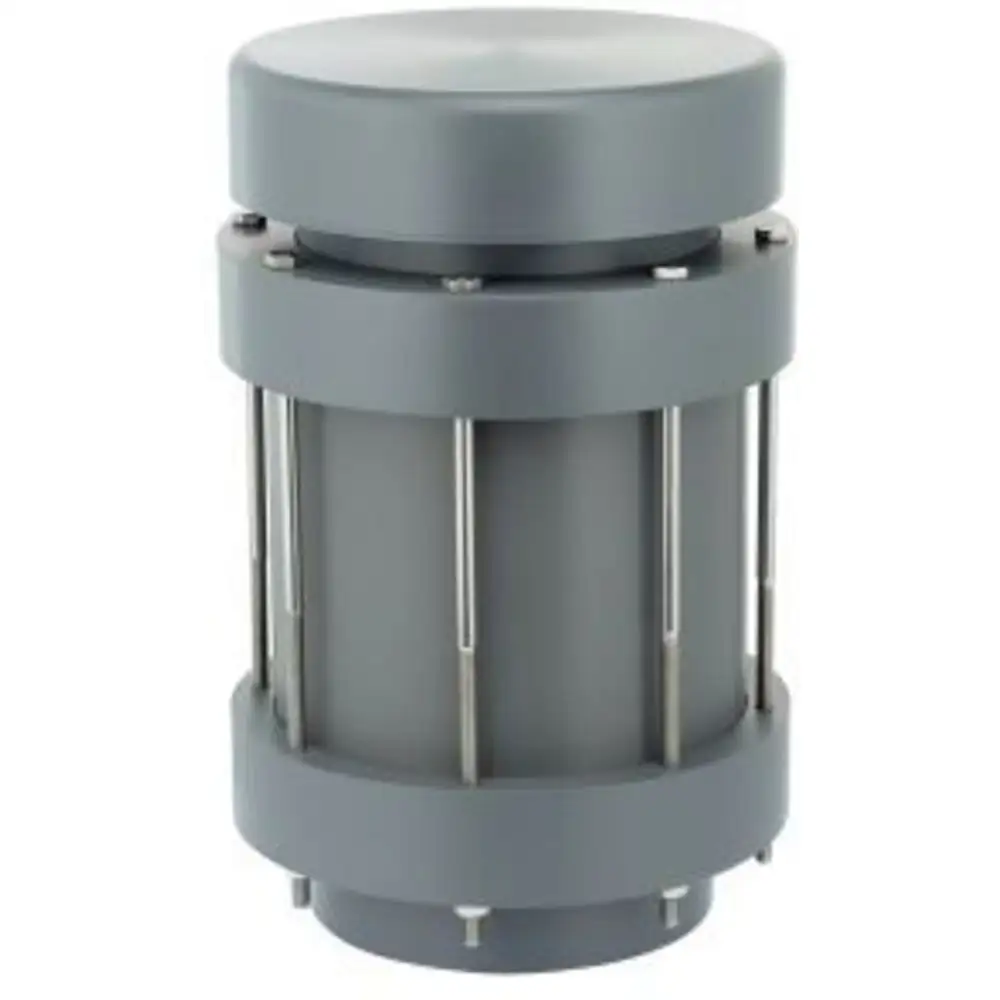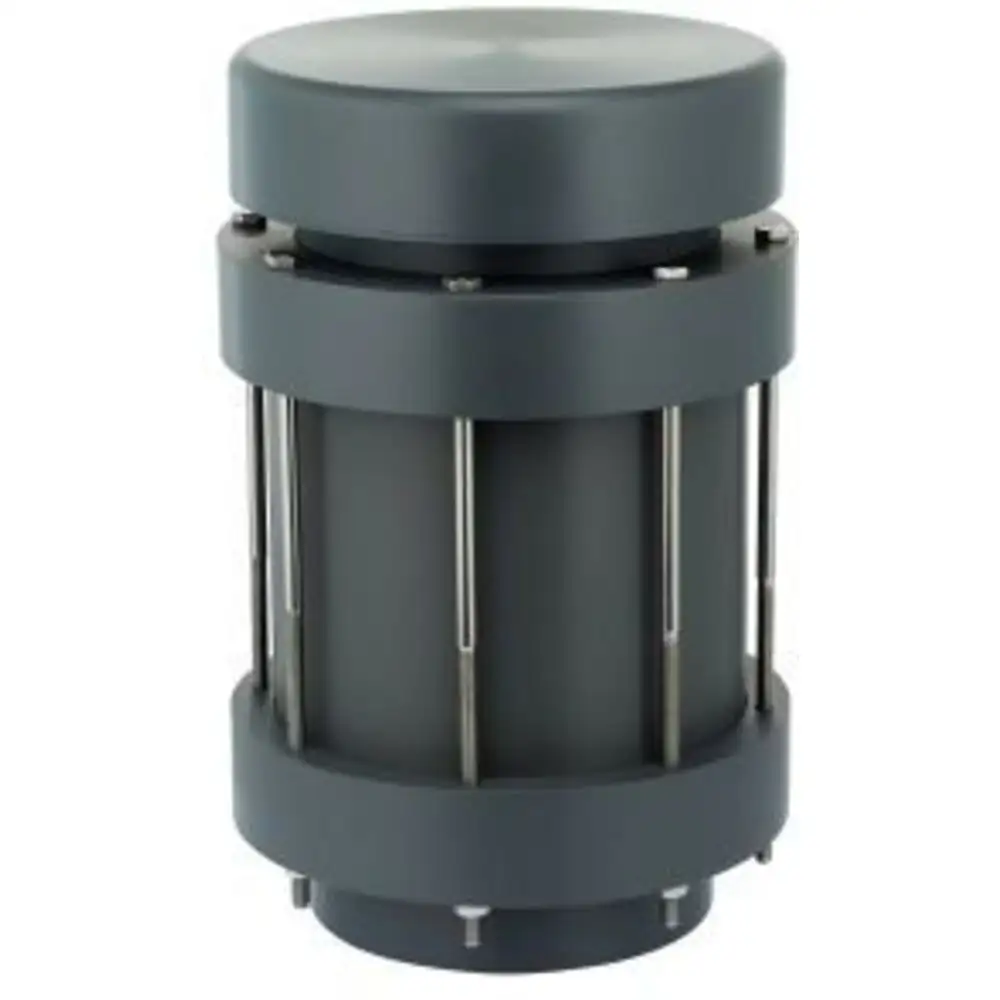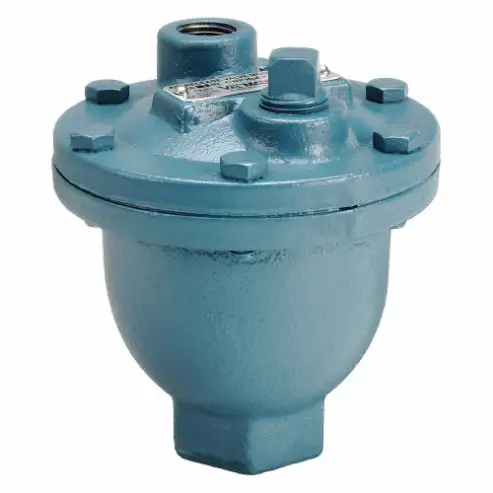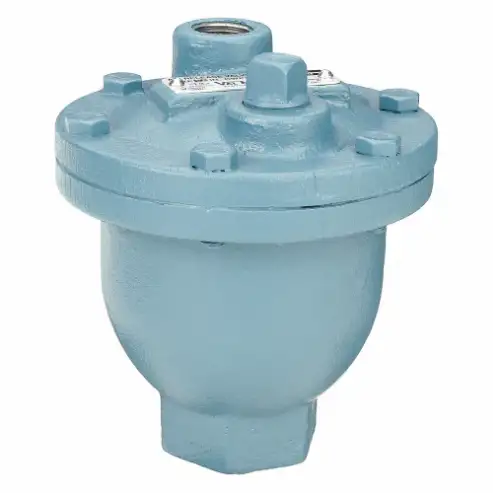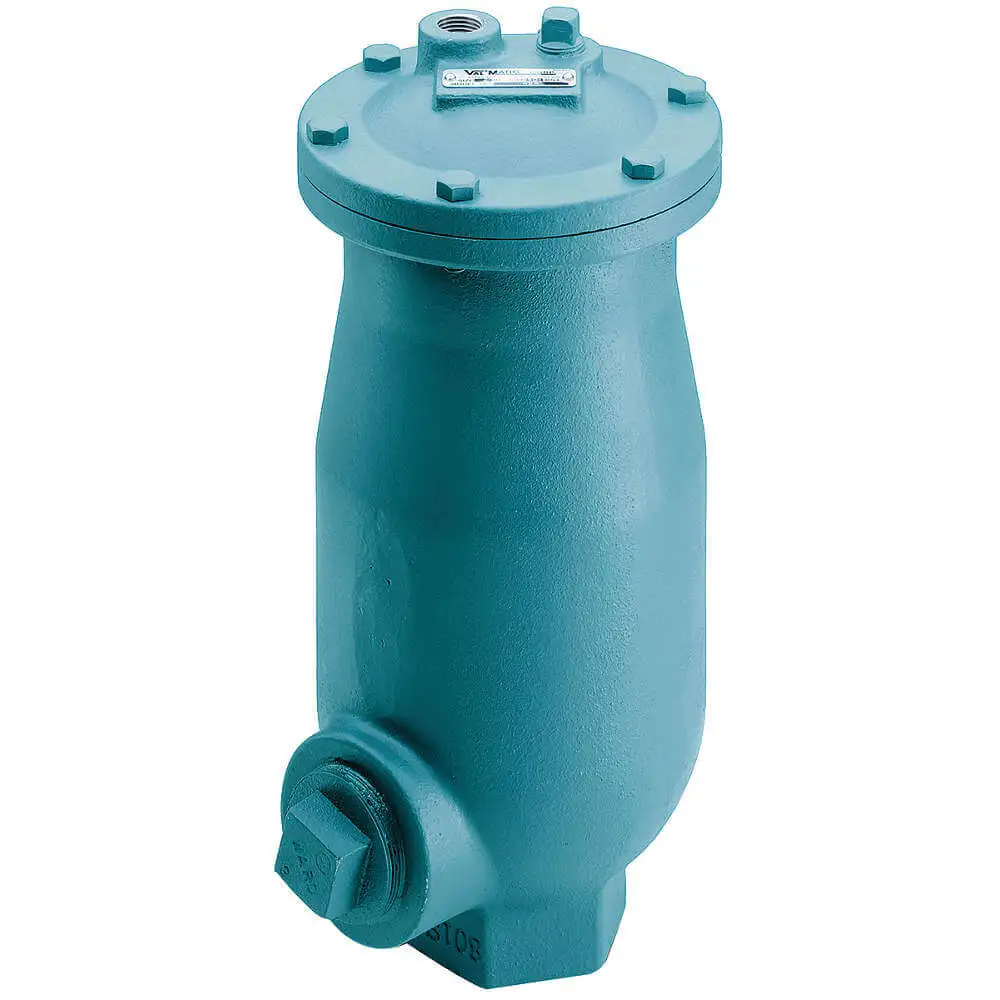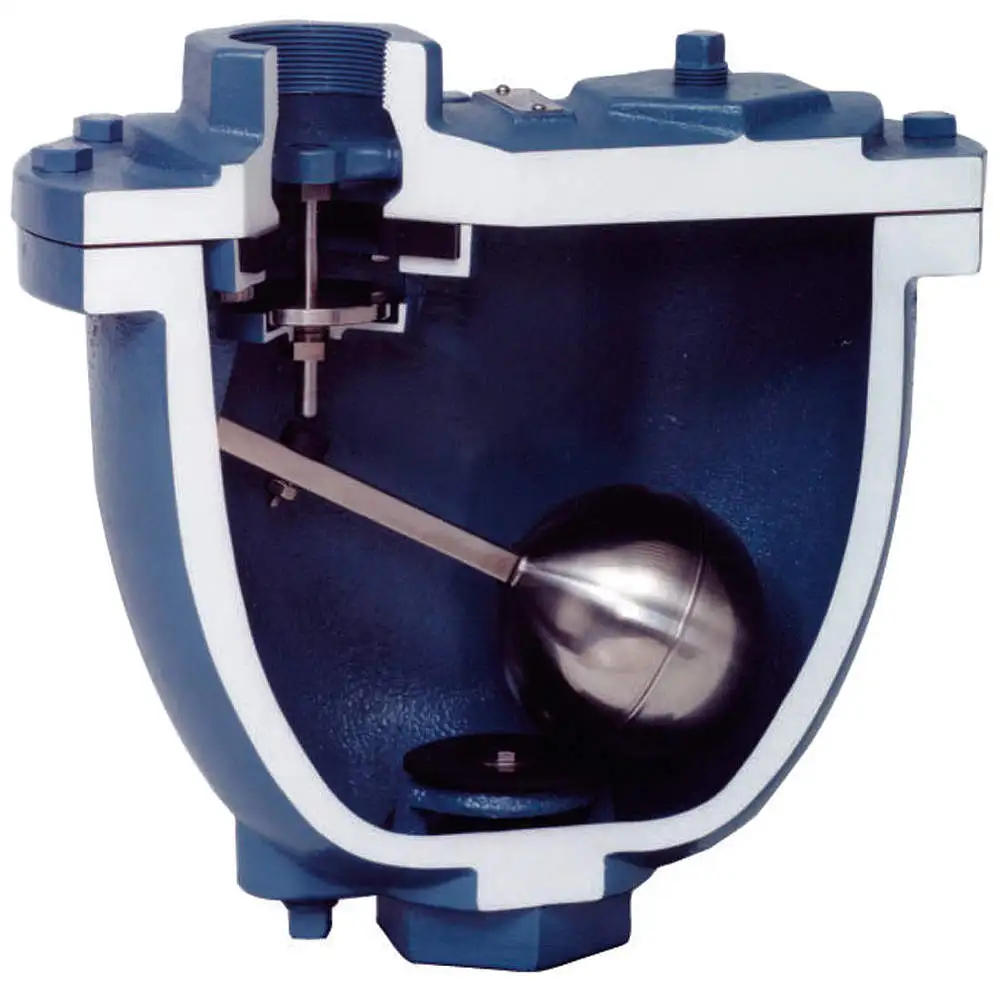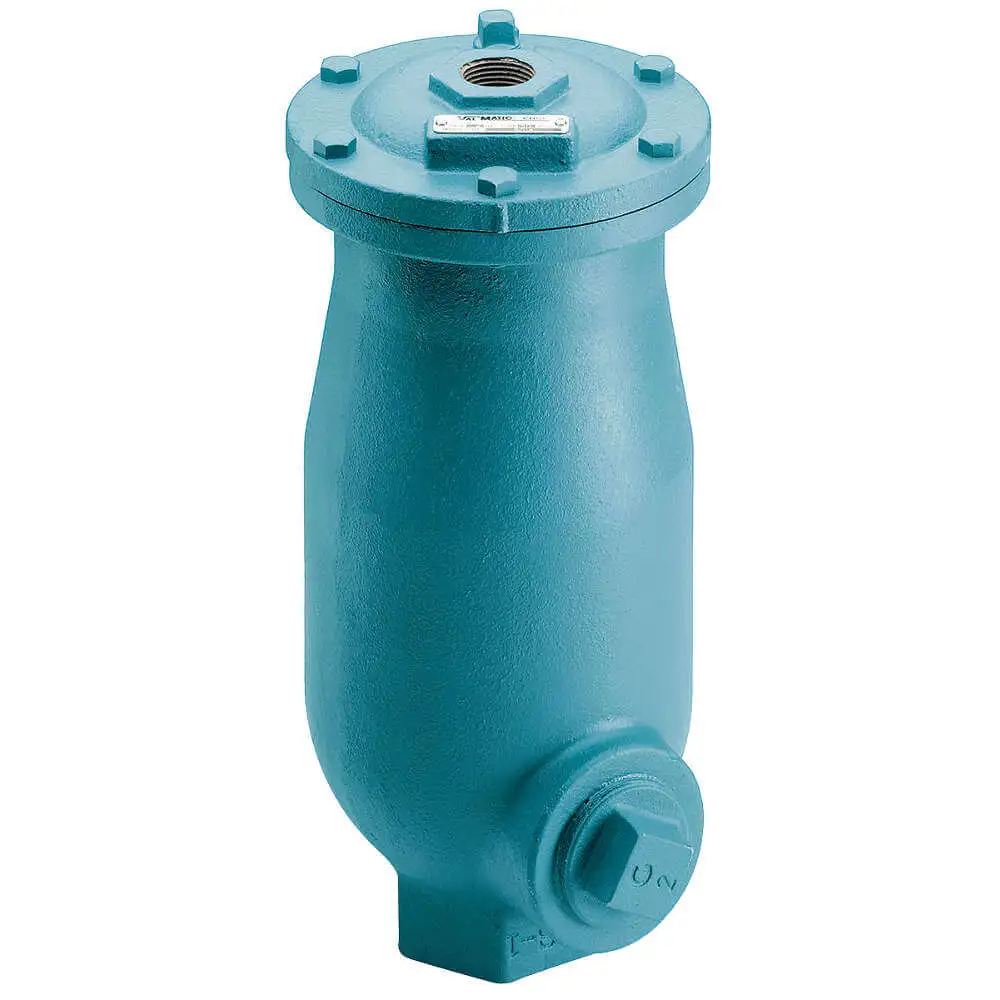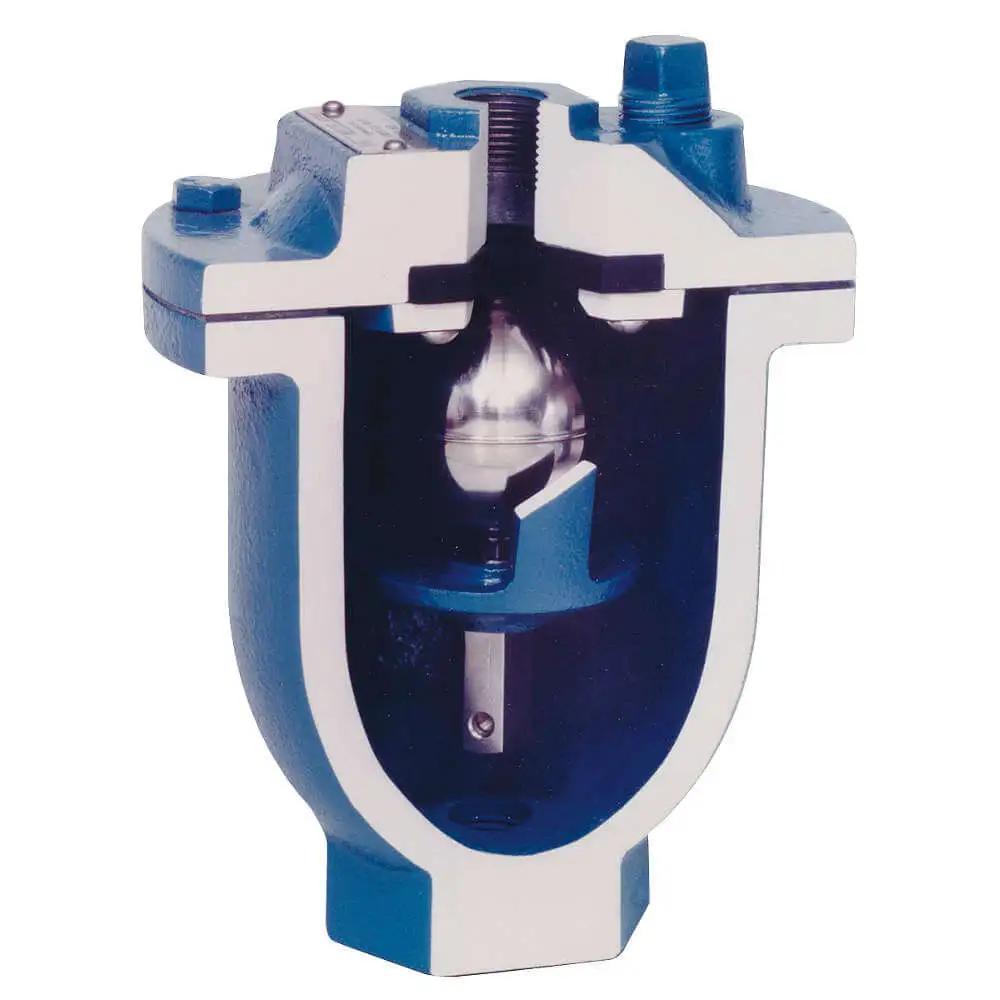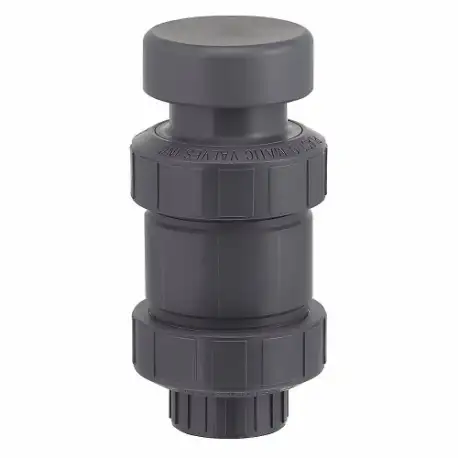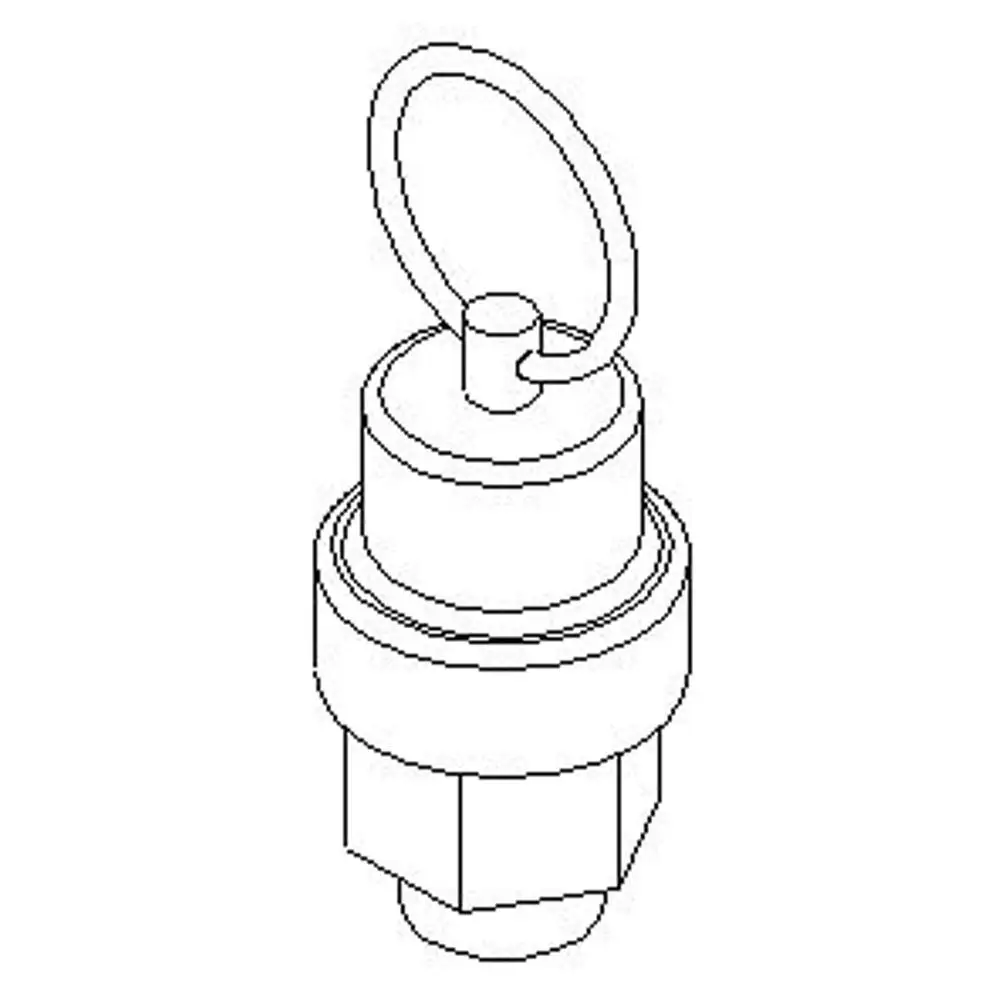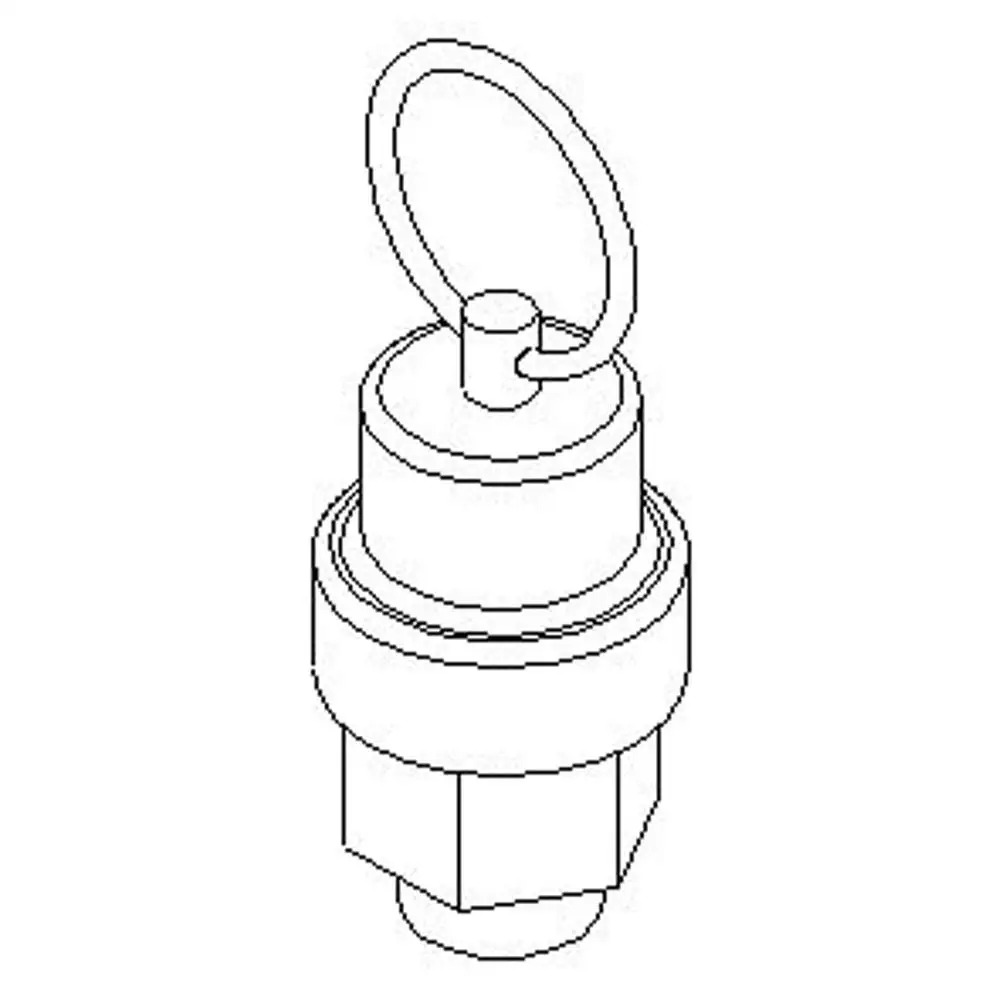Uses
Air & vacuum release valves automatically exhaust the small amounts of air that usually collects at high points in closed loop pipelines. These SS & PVC air release valves are ideal for water purification, chemical processing, marine and wastewater management industries.
Features
Vestil Air Release Valves:
- Vestil air release valves feature resilient seating for providing positive shutoff during operation, thereby ensuring maximum safety & pipeline system protection.
- These air release valves have 316 stainless steel floats & internal trim for minimising wear against highly abrasive conditions.
- Vestil air release valves feature extended enclosures with a sloped bottom for preventing abrasive materials from reaching the operating mechanism.
- These air release valves have rugged floats for accelerating the valve closure, thereby reducing leakage and chances of valve clogging.
Plast-O-Matic air release valves:
- Plast-O-Matic air release valves feature rugged design for allowing safe expulsion of accumulated unwanted air in piping systems.
- These air release valves have a self guided poppet for assuring the emission of system liquid is minimal before sealing.
- Their true union simplifies the process of valve removal or inspection while ensuring minimum piping breakdown.
- These air release valves require minimal closing pressure (0 psi). The valve closes as the liquid rises after pushing out the unwanted air.
- Plast-O-Matic air release valves feature EPDM seals for sealing the valve shut at system pressure
- These air release valves have poppet style seals. These seals are durable and do not deform under high pressure, unlike hollow ball style seals.
- Plast-O-Matic air release valves have no metal components for protecting the system purity while protecting the valve against harsh chemicals.
Working Mechanism
Air release valves are connected to pipelines at the highest point where air collects. Air bubbles that are trapped inside the pipeline enter the valve while displacing the liquid inside the valve, essentially lowering the liquid level. When the liquid level drops to the point where it no longer buoys the float, the valve float drops. The seat pulls away from the orifice by this motion, thereby opening the air release valve and releasing the accumulated air into the atmosphere. As the air is released / vented, the water / liquid re-enters the air release valve and once again buoys the float, thus lifting it to the point where the seat presses against the orifice, thereby closing the valve. This cycle of air release valves automatically repeats to maintain the air free system.
Frequently Asked Questions
What size air release valves should be chosen for the application in hand?
It is suggested that valves should be 1 inch per 1 feet of pipe diameter. Use correct sizes of valves for the application in hand, ensuring the safety of the pipelines.
How to maintain air release valves?
Air release valves do not require maintenance or lubrication. If the situation demands maintenance, disconnect the air release valve from the pipeline by closing the shut-off valve. Then, relieve the excess pressure present inside the pipeline and the valve.
How to install the air release valves?
The user should install these air release valves vertically at system high points with the inlet down. For pipeline service, provide drainage and adequate screened venting. During the valve closure, little fluid discharge may occur. That is why the vent lines must extend to the open drain area.
Where to install the air release valves?
Ideally, users should install the vacuum release & air release valves at a gap of 800 metres on long pipes & complex pipeline systems for properly drawing and venting air into the pipeline system. Otherwise, dislodged air pockets could flow downstream to form large pockets of air at the top section of the pipelines.
How do air release valves work?
The pressure inside the valve acts against the valve seat & the resultant force generated from this pressure opens the valve. The valve head stays open until the air pressure drops to zero and all of the accumulated air is released, after which the valve gets closed again. This cycle repeats automatically, releasing all the accumulated air in intervals.
How to flush an air release valve?
Open the blow-off valve's bottom port and use caution, as this action releases system pressure within the valve. Then, open the blow-off valve's top, thereby allowing the flush water to pass from the valve. Lastly, observe that the water is flushed until the solids wash out of the valve.
What is the difference between an air relief valve and an air release valve?
The air release valves allow the rising liquid to force the accumulated air out from the piping system. However, air relief valves do not vent the accumulated air below the set pressure point. The air release valves are open at atmospheric pressure and close automatically if the liquid is present inside the valve.
Why are air release valves used in water applications?
Air release valves are crucial for ejecting the trapped air for ensuring the smooth flow of water in irrigation systems and large & complex pipelines.
What is the difference between degassing and depressurisation in valves?
Air release valves are open when the system is depressurised. These valves open when the liquid level drops. However, degassing valves are not suitable for expelling large volumes of air at system startup due to their small vet orifice.
 £ GBPChange Country
£ GBPChange Country